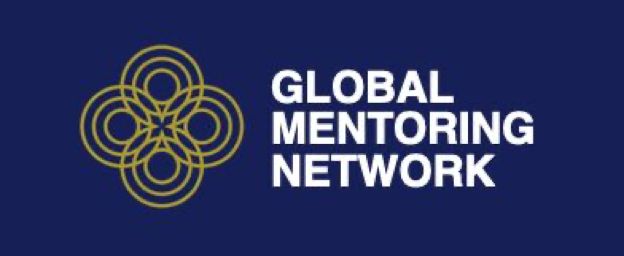Employee Development Strategies
Developing effective methods to strengthen labor competencies in the organization is essential to achieve long-term success by incorporating the different talent management tools, which provides multiple benefits for both employees and the company, also encourages the organization to position itself at a competitive level with qualified employees. These are some methods to develop and strengthen the labor competencies of the employees of the organization:
Job rotation
Job rotation is based on learning new skills or improving existing skills from a different position, which allows the identification of employee’s opportunity areas, as well as their professional interests. This activity is carried out within a period defined by the employer and pursues:
1. From the employee’s perspective:
- Increasing the interest of employees in certain areas also develops the peripheral vision of the business through direct participation in various functional areas of the organization.
- Promotes the ability to adapt to changes (flexibility).
2. From the employer’s perspective:
- It facilitates the renewal of personnel through the flow of new ideas. It helps to have a defined course for the career and succession plan, providing relevant knowledge, which is an advantage for the company when facing challenges and environmental changes.
- It favors the change of people with low performance. In the same way, by allowing the employee to grow, their job satisfaction can increase.
The rotation and the nature of the job.
The job rotation strategy is better adapted for administrative activities. For operational positions, such as activities involved with the production lines (continuous flow), the planning aspect requires higher importance, since the continuity of operations depends largely on the operation of an entire team. Likewise, for this kind of position, job rotation could compensate for ergonomic or psychological aspects, as well as promoting a versatility matrix that helps in case of unexpected absences. Companies that practice job rotation as part of their organizational philosophy do not only do it because of their identity but also because their working methods are compatible with this work dynamic. They usually work on temporary or short-term projects focused on results. For example, this practice is common in many companies focused on the direct sale of products. It is common in flexible structures or those businesses where its members are responsible for all functions evenly and more visible in small companies than in large ones.
Disadvantages of job rotation models.
A) It involves investment in rotation processes. It means new costs for the planning and training process. Also, Job rotation causes a decrease in productivity during the initial training period.
B) It affects teamwork integration, in many cases taking a considerable period to adapt to the new work and team dynamic.
C) When the job rotation is excessive, the company can project an image of instability and improvisation.
Key factors.
Although job rotation needs a documented record of those tools that provide tangible data. Likewise, communication and corporate policies for job rotation are key factors, since the procedures and the means of execution must be very clear to avoid affecting the organizational climate or generating conflicts of interest. Job rotation also brings adaptation, time for engagement, training, and qualification processes that usually take weeks or even months. In this case, time assumes an important role, since organizations must be able to decide when is the right moment to proceed to the rotation in one or more jobs. In this sense, Hakenes and Katolnik (2017) developed a study to determine the optimal time for job rotation in an organization, based on the premise that employees guard their reputation, so constant movements within the organization could affect it. Additionally, there are variables such as the interruption of the flow of information, which tends to generate noise within departmental units of the organization.
In contrast, another factor is the generational aspect of employees. While for "Baby Boomers" which according to Indriago (2010) are more oriented to seek job stability in organizations, a job rotation strategy could generate the feeling of lack of professional projection in the organization, in other hand, for “Millennials”, positions are covered in less time, therefore more learning and new experiences would be on the horizon. In this regard, the author comments that the new generational trend is that people do not spend many years in an organization, since the new requirements of the job market are demanding versatility in professionals. In the same way, many organizations have become more plains in their organizational structure, leaving only one or two steps between levels, for example, Production Management and General Management. The consequence of both scenarios is high mobility, which does not allow the employee to mature to obtain higher positions.
360 Feedback reviews.
The purpose of this activity is to align the efforts of all the professionals of the company with its strategic objectives. It aims to unify management methods, as well as performance evaluation criteria through the integration of all the members of the organization into a common project. It is a tool that recognizes efforts, the 360 feedback allows the evaluation in the immediate levels with which a workstation communicates directly, promoting improvements in communications, information exchanges, and employee development and therefore organization’s development. As a strategic purpose, this activity continues to determine to what extent do employees have the required competencies? To this end, the employee's performance is reinforced through a strategy in which both external, internal and supplier clients provide relevant information to establish the strengthening and development opportunities that will improve the process of evaluation, taking advantage of the perception in a general scope.
Key factors.
As a primary function, the tool seeks to motivate behavioral changes and involve the whole organization in the employee development process. As a balanced process, it allows a person to be evaluated from different approaches. Compared to other personnel development activities, it is more efficient over time, as today a collaborator is assessed, but over time, the same assessment can be made and compared if there has been any improvement in skills or behaviors by the employee, so the tool must be faced with a positive attitude, disposition to continuous improvement and an open mind. Its correct application can benefit the middle managers, executives, and in general all the employees because it provides greater objectivity and promotes professional development, identifying competencies, and growth opportunities. On the other hand, if there is a gap with the strategic objectives of the company, it can directly affect the organizational climate because it could lose the constructive purpose and generate internal rivalries.
Disadvantages of 360 reviews.
It is a complex process that needs organizational maturity and requires a strong cultural structure because rigid structures are generally characterized by unidirectional models 45 degrees (Supervisor to employee) which respond to a concept more hierarchical. In the case of 360 Feedback, the tool requires a more flexible and comprehensive organizational structure, and therefore more expensive in terms of administration. In this way, Aguinis (2013) comments this system is sometimes labeled a 720 degree because the data collection takes place at least twice.
On the other hand, Nagel (1997), the weakness of this system goes to how to interpret the findings when they differ from group to group. As each rater sees a different behavior, how does the organization know the basis upon which the ratings are observed? This tool ignores the system in which the behavior occurs. There may be a fear of retribution from the supervisor if the rating is unfavorable.
Employee mentoring program.
Fernandez (2017) comments that Mentoring is mostly known as an activity of guiding a person usually with less experience or knowledge. This program might be a systemic process in which professionals with experience tutor the incorporation, adaptation to new roles, employee development, and/or learning process of other professionals with less experience or knowledge of the company and its politics, these people are called mentees. There is a big difference between mentoring and coaching concepts. In regards to this topic, Valderrama (2008) comments that both definitions are powerful learning methodologies for individuals and organizations. They share the mission of promoting personal and professional development. The fundamental difference is the degree of experience that each one requires, which means that coaches do not need to be experts.
Key factors.
Mentoring well applied provides many benefits to the mentees to the mentor and the company in general. As Fernandez (2017) indicates, the mentee receives the support of an experienced professional that guides the mentee so his or her learning curve is shortened, where the professional can be more productive and efficient, bringing confidence and motivation into the workplace. The mentor develops professional and supervisory skills and recognizes good performance, bringing self-confidence and motivation as well. The company benefits through perfecting employee skills and see them with more compromise, motivation, and satisfaction. To implement this program in a company has to be considered, defining the objective of the program before implementing it including possible external resources that the company might need to put in action the program. Also, pick carefully the mentors, disposition, sharing company values, and willingness to help others is key, mentors have to be trained in techniques, attitudes, and skills. Besides selecting the mentors carefully this applies to the mentees too by identifying their needs, a good example is a new employee versus a seasoned employee. Assigning the mentor with the correct mentee should be based on characteristics and each person’s needs, always keeping in mind the voluntary participation and that the mentor cannot be of the same area as the mentee, so there can be more sincerity and gaining in the relationship as all this process is confidential.
Disadvantages of Employee Mentoring Program.
The weakness of the process would be the lack of disposition from any of the sides involved, that is why the importance of avoiding forcing this activity. Also, when the company allows any professional to sign to this program just to get exposure not having the right goal in mind can jeopardize the reputation of the program, the selection of the mentors and mentees should be by prioritizing those with good performance (could be good yearly evaluation results), to develop these employees in other skills. Another thing to keep in mind is that this program is not to resolve everyone’s problems, is to utilize knowledge management as a key competitive advantage.
Will Canduri
CEO & Founder of BPRO Performance Solutions LLC
RGM Corporate Director, USA
Email: wcanduri@bproconsulting.com
Instagram: @bprollc
References
Aguinis, H. (2013). Performance management (3rd ed.). Boston: Pearson.
Indriago, L. (2010). La Gerencia del siglo XXI, sera mas humana? [Management in XXI century, will be more human?]. Volume XV, I. Caracas, Venezuela: IESA.
Fernandez L., A. (2017). Mentoring en la empresa. [Mentoring in the organization]. Retrieved April 2, 2018, from: http://www.eoi.es/blogs/alfredo-fernandez Lorenzo/2017/01/15/mentoring-en-ll-empresa/
Hakenes, H. and Katolnik, S. (2017). European Economic Review On the incentive effects of job rotation. Retrieved: April 2, 2018, from https://www-sciencedirect- com.cmich.idm.oclc.org/science/article/pii/S0014292117301289?via%3Dihub
Nagel, R. (1997). 360 Degree avalanche. HR Monthly. Retrieved April 5, 2018, from: http://www.amazingresults.com.au/sitefiles/file/360_Avalanche.pdf
Valderrama, B. (2008). Desarrollo de Competencias para Mentoring and Coaching. [Skills development for Mentoring and Coaching]. Spain, Madrid: Pearsons.




